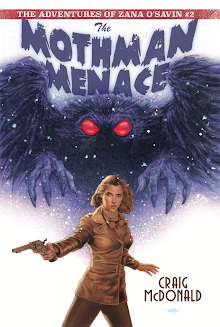
Sixty-five years ago today, the body of Elizabeth Short, "The Black Dahlia," was found in a vacant lot in Los Angeles.
The case remains unsolved.
In 2008, I published my second Hector Lassiter novel, TOROS & TORSOS, incorporating the Black Dahlia murder as a key plot point.
The Hector Lassiter series is all about secret history — a blending of fact and fiction that aims to get at something like the hidden truth.

Toros & Torsos (aka, Hector Lassiter #2), spins on the premise that surrealist art and theory may have informed or inspired several bloody, unsolved crimes of the 20th Century — most notably the murder of Elizabeth Short, the so-called “Black Dahlia” as she was dubbed by panting L.A. journalists circa January 1947.
The correspondences between Elizabeth Short’s mutilation murder and photographs and paintings by Man Ray and Salvador Dali were first put forth by Steve Hodel in his 2003 nonfiction study Black Dahlia Avenger, a New York Times notable book and Edgar® Award finalist.
Hodel’s theories were greatly expanded upon by Mark Nelson and Sarah Hudson Bayliss in their excellent 2006 release, Exquisite Corpse: Surrealism and the Black Dahlia Murder.

Using the Nelson, Bayliss and Hodel works as a springboard, I extrapolated outward to construct a multi-decade saga that encompasses not only the Dahlia murder and the post-war Hollywood surrealist art circle (which included such diverse personalities as John Huston, Fanny Brice and Vincent Price), but also the Spanish Civil War in which the surrealists played a pivotal propaganda role.
Further research in that area uncovered jaw-dropping reports of Spanish torture chambers designed and constructed to surrealist aesthetics — a sort of crazy cross between Escher and Abu Ghraib.
It takes a strong stomach and a cold eye to confront the evidence put forward in the Hodel and Nelson/Bayliss books — particularly in Exquisite Corpse. But once key surrealist works are compared to Elizabeth Short’s autopsy photos (reproduced in graphic detail in the Nelson/Bayliss books) it’s difficult to shake the notion surrealist imagery was very much on the mind of Betty Short’s twisted, never-apprehended killer.
Life imitating art…art imitating death, and for some, it seems, it wasn’t truly art until somebody died.






































No comments:
Post a Comment